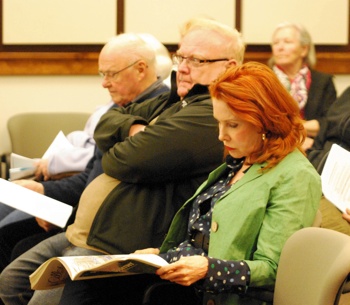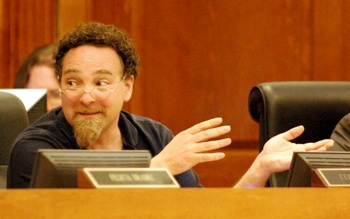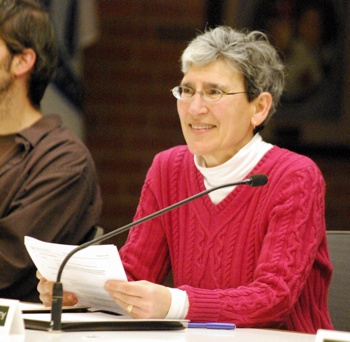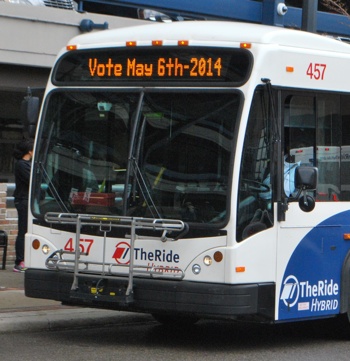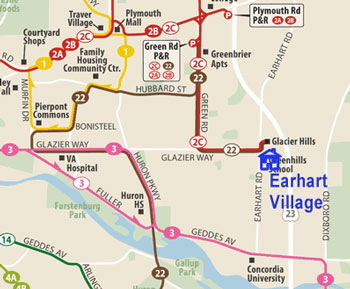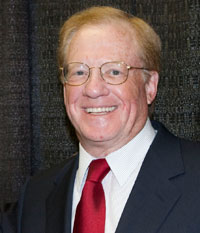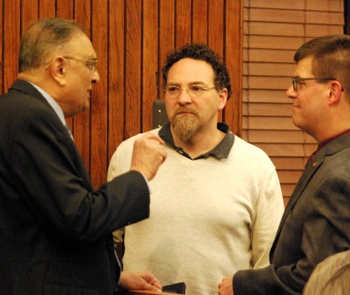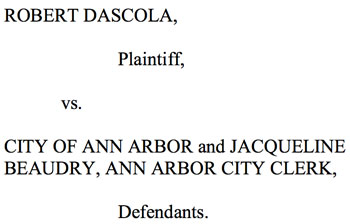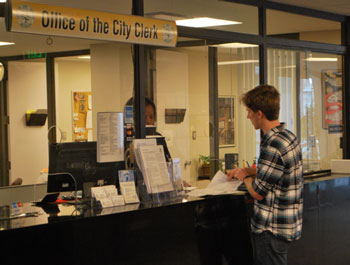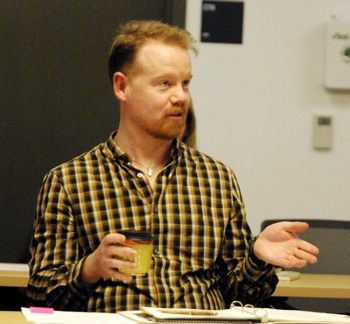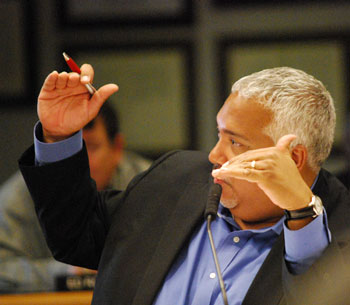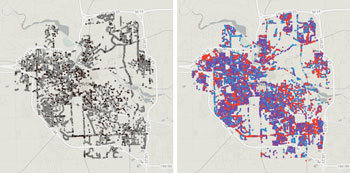City Council Passes FY 2015 Budget
The city of Ann Arbor fiscal year 2015 budget has been approved by the city council. The fiscal year starts on July 1, 2014. City council action came after 2 a.m. on May 20, 2014 at a meeting that started at 7 p.m. on May 19.

From left: Margie Teall (Ward 4), Chuck Warpehoski (Ward 5), Stephen Kunselman (Ward 3) and Sumi Kailasapathy (Ward 1). Deliberations on the FY 2015 budget extended until 2:15 a.m.
The general fund component of the budget is roughly $98 million this year. In terms of staffing changes, city administrator Steve Powers’ proposed budget included one additional firefighter position, three additional police officers and one additional rental housing inspector. Those staffing levels remained the same at the conclusion of the May 19 deliberations.
When the general fund is added in with the rest of the city’s budget – the street fund, water fund, sewer fund, parking fund, and the like – the total expenses proposed for FY 2015 come to about $330 million.
The council’s deliberations on the budget resulted in several amendments, but none that had a dramatic impact on the budget. Neither of the amendments affecting the proposed police staffing levels succeeded – one that would have increased the number of polices officers by two officers instead of three, and another that would have increased the number of officers by five instead of three. A proposal to restore fall loose leaf collection failed, as did a proposal to extend compost collection to a year-round service.
Two amendments that would have affected Ann Arbor SPARK also failed. One would have required the local development finance authority (LDFA) to reserve more money for infrastructure improvements – like a high-speed communication network – and one of the likely reductions would have come from Ann Arbor SPARK. The other failed amendment would have eliminated the $75,000 annual contribution the city makes to SPARK from its general fund. Those two amendments alone took about 90 minutes of council deliberation.
Out of the 18 amendments that had been disseminated in advance of the meeting, the council approved just seven. Among the amendments getting at least a six-vote majority was a proposal to add funding for “community-facing” climate action programs, paid for in part with funds that would have otherwise been used for an Ellsworth Road corridor study.
Also getting approval were two amendments meant to generate funding to pay for animal control services. One of those amendments used money that would have otherwise funded a commercial sign inventory to pay for animal control services from the Humane Society of Huron Valley. The other encouraged increased compliance with the city’s dog licensing law, which would generate additional revenue. The city estimates current compliance with dog licensing requirements at only 7%.
The $300,000 in the proposed general fund budget allocated for the demolition of the city-owned 415 W. Washington building was eliminated for that purpose, without any other purpose identified for spending the money.
Two budget votes related to streets got approval – one directing the city administrator to explore alternative methods of street funding, and a second one allocating more money this year from Act 51 funds for alternative transportation. The council also requested more information that would allow it to set the amount of Act 51 funding for alternative transportation at the appropriate percentage level – 2.5% or 5%.
The council’s deliberations on the FY 2015 budget began around 9 p.m. and stretched more than five hours with a final vote of approval coming at 2:15 a.m. the following morning. Mayor John Hieftje, who missed the council’s May 12 work session due to illness, was not back to full strength at the May 19 meeting and departed the meeting around 1 a.m. Mayor pro tem Margie Teall (Ward 4) led the remainder of the meeting.
Outcomes on each amendment that was considered, in chronological order, are presented below, excerpted from The Chronicle’s live meeting updates. Each timestamp includes a link to council deliberations on that item, as reported in the live updates. In brackets are the names of councilmembers who sponsored the amendment. [Full Story]








